
Years ago, Gary Larson, author of the comic strip The Far Side, published a panel showing two bears in the woods, standing over a rifle lying on the ground. One bear says to the other, “Thunderstick? You actually said, Thunderstick? That, my friend, is a Winchester .30-06.” Rifle loonies normally define any rifle by the same characteristics, the maker and the chambering, though not necessarily in that order. Usually the answers are obvious, such as a Winchester .30-06. Occasionally, however, they are not. The more “advanced” among us can often identify the parts used in what we term a “custom rifle,” but still have no idea who made it.
Among the first of my several “mystery rifles” appeared a decade ago on the used rack of a local store, and was glaringly identifiable in many ways, including its historic era, the 1950s and ’60s. The stock was made out of finely-figured walnut in what many called the “California style,” with a high “rollover” cheekpiece, the top cresting like a wave on Malibu Beach, and a “hooked” pistol grip separated by a white-line spacer from its zebra-wood cap with an ebony diamond inletted into the center.
In many California stocks, the forend tip was made of the same wood as the grip cap, angled at 45 degrees both at front and rear. Instead, this heavy-barreled rifle was apparently made to shoot off sandbags, with an uncheckered beavertail forend with flared sides vaguely resembling a canoe. There were no sling swivels or studs to hang up on bags during recoil, perhaps causing fliers.
This story is from the January - February 2021 edition of Rifle.
Start your 7-day Magzter GOLD free trial to access thousands of curated premium stories, and 8,500+ magazines and newspapers.
Already a subscriber ? Sign In
This story is from the January - February 2021 edition of Rifle.
Start your 7-day Magzter GOLD free trial to access thousands of curated premium stories, and 8,500+ magazines and newspapers.
Already a subscriber? Sign In
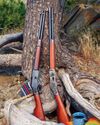
CIMARRON .32-20 Short Rifle & Carbine
In the heyday of Winchester Repeating Arms Company lever guns, it offered muskets, standard rifles, short rifles and saddle ring carbines.
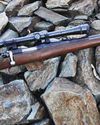
Remington's Model 722 and .222 Cartridge
It's easy enough to define what a varmint is, those pesky critters that tear up pastures, flower beds and all kinds of expensive crops people need for various reasons - most importantly, to make a living and/or something with which to feed themselves.

Coyote Bullets
What is Best for You?
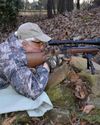
Remington's 5mm Rimfire Magnum
Shooting a Classic
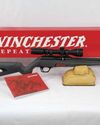
Winchester's New Wildcat
The Ultralight Rimfire Varmint Rifle
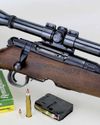
.223 Remington from .30-30 Winchester?
Multitasking for Varmints

LOADS FOR A .22 TCM
The .22 TCM first appeared commercially in 2012, chambered in a Rock Island Armory 1911-style handgun.
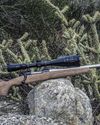
Everybody Loves Velocity
The 4,500-fps WSSM Project
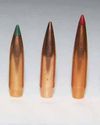
A BOLT-ACTION FRANCHI 224 VALKYRIE
Testing New Loads
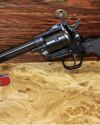
.22 Winchester Magnum Rimfire
Shooting Revolvers